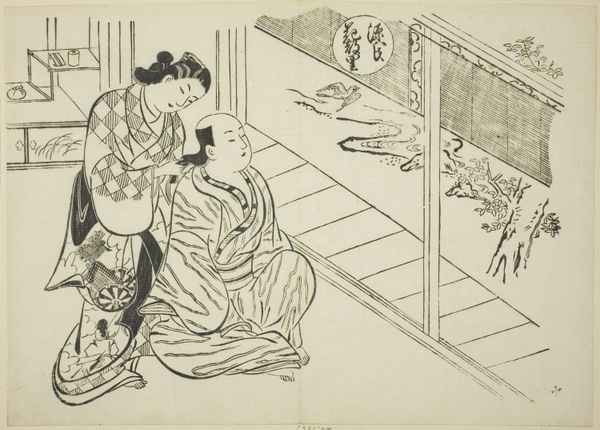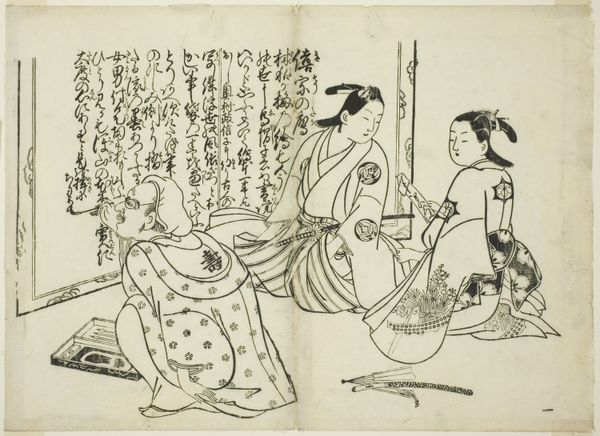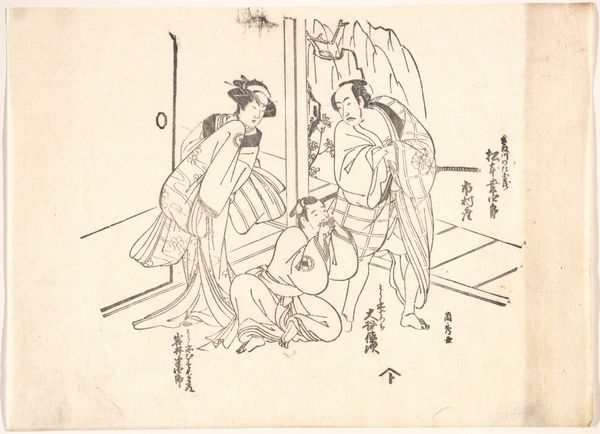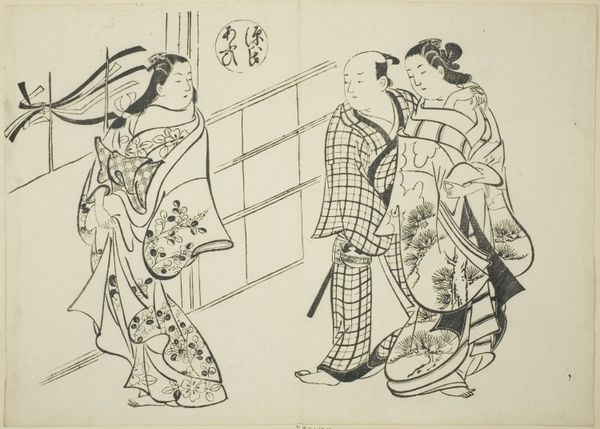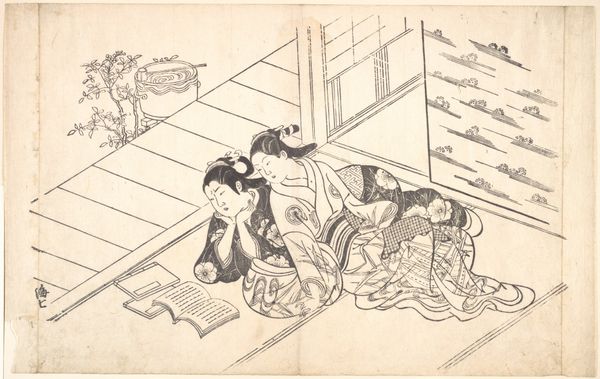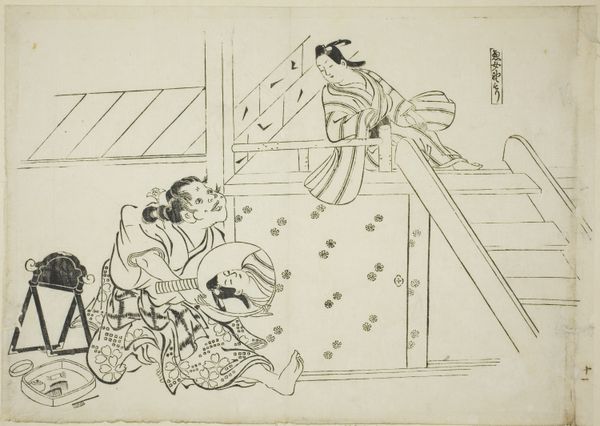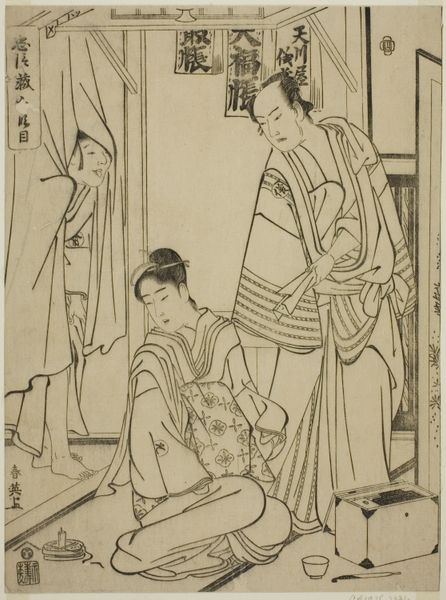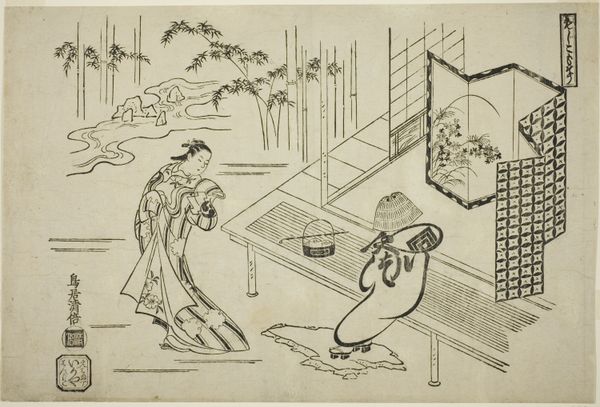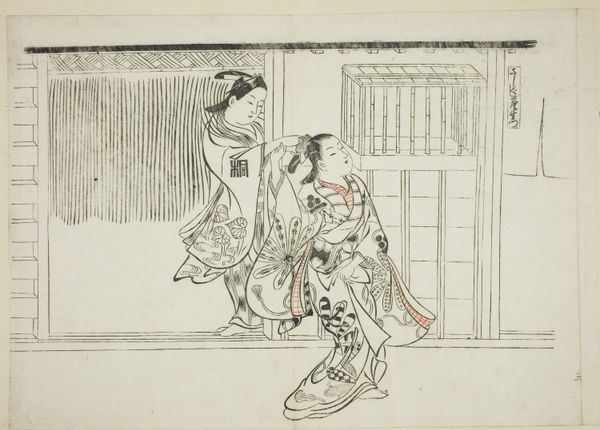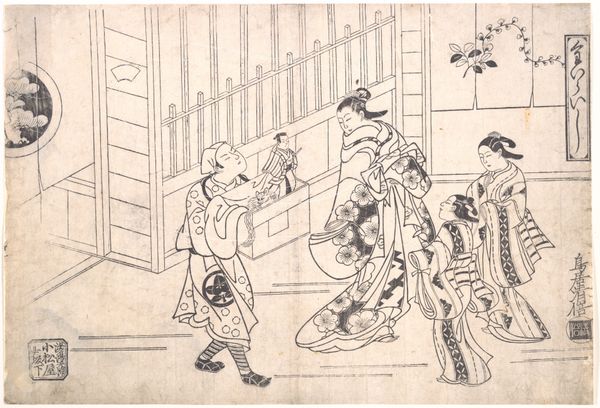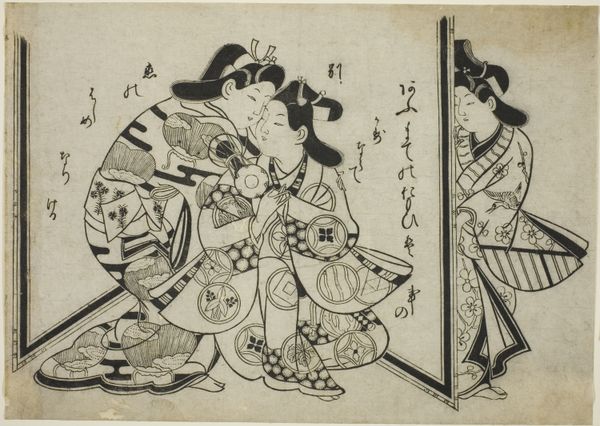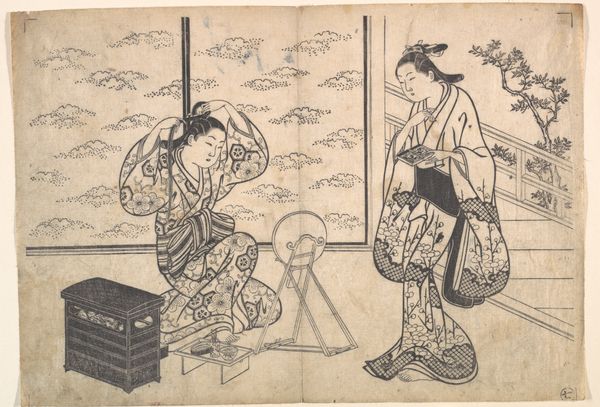
drawing, print, ink, woodblock-print
#
drawing
# print
#
asian-art
#
ukiyo-e
#
figuration
#
ink
#
ink drawing experimentation
#
woodblock-print
Dimensions: H. 9 14/16 in. (25.1 cm); W. 13 9/16 in. (34.4 cm)
Copyright: Public Domain
Curator: Ah, let's discuss "The Actors," a woodblock print in ink, brought to life by Ippitsusai Buncho between 1723 and 1792. It currently resides here at the Metropolitan Museum of Art. Editor: I'm immediately struck by how economical the lines are, yet they convey so much. It’s like a whisper of a scene, but full of poised anticipation. Curator: Precisely! Buncho was a master of ukiyo-e, capturing the fleeting moments of everyday life and the theater. The actors themselves, rendered with such precise lines, become symbols of the drama inherent in human interaction. Their elaborate robes hint at their roles. Editor: The detail in those robes! They almost overshadow the faces. I wonder, is it intentional? Do the costumes speak louder than the players themselves, like a commentary on societal roles? Curator: The attire indeed signifies their status within the Kabuki tradition. The male figure, possibly holding a flute, exudes an almost exaggerated confidence; meanwhile, the woman’s gesture towards what seems to be an offering… It’s all quite deliberate. Think of the Kimono as text; Buncho's astute viewers could immediately read these visual signs and allusions. Editor: And behind them, that minimalist landscape through the window – it's like another stage set. It is so strange to see nature as another set decoration. I am used to western painting where it acts as something to be reckoned with in all its romantic power. Curator: Indeed. Landscape in Ukiyo-e provides an active commentary on character psychology. Remember, too, that Ukiyo-e prints held considerable social weight and popular appeal beyond their aesthetic value, capturing moments and figures that resonated deeply within contemporary Japanese society. These actors would be celebrities! Editor: So true. There's a delightful flatness to the whole scene that somehow enhances its depth, its potential narrative. And knowing this was reproduced and disseminated… it's not just a single image; it’s a cultural echo. It's incredible to think about all of those cultural ripples made from what seem like these simple means. Curator: Ukiyo-e as media. The essence of theater immortalized and proliferated. Each print carries this potent mixture of performance, symbol, and collective memory. Editor: It really gets under your skin when you consider the historical context.
Comments
No comments
Be the first to comment and join the conversation on the ultimate creative platform.
